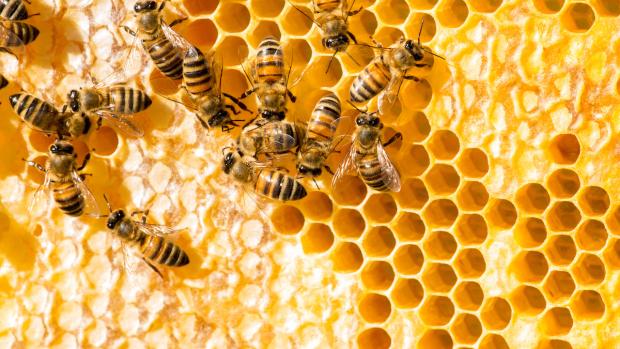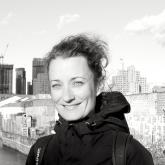Honeybee hives may reveal the microbial signatures of urban aerobiomes, researchers at NYU Tandon find

Honeybees foraging in urban environments could provide valuable information about the communities of fungi and bacteria that exist there, some of which impact people’s health and well-being, a study published in Environmental Microbiome suggests.
Analyzing these complex groups of microorganisms — known as microbiomes — can require teams of volunteers to gather samples, a prohibitively time- and labor-intensive process. Honeybees, because they forage daily in a two-mile radius of their hives, provide an alternative method of sample collection that can, ultimately, allow researchers to create a microbial map of a city far more efficiently.
Elizabeth Hénaff, Assistant Professor in the NYU Tandon School of Engineering’s Center for Urban Science and Progress (CUSP) and in the Department of Technology, Culture and Society, along with colleagues from MIT, Pratt Institute and Weill Cornell Medicine, conducted a pilot study by sampling various materials from three hives in the New York City boroughs of Brooklyn and Queens. They found diverse genetic information in the debris accumulated at the bottom of the hives, including genetic data from environmental bacteria.
Further sampling of hive debris in Sydney, Melbourne, Venice, and Tokyo, revealed that each neighborhood and city has a unique genetic signature as seen by honeybees.
The genetic data from Venice was dominated by fungi related to wood rot and date palm DNA, while Melbourne's sample was dominated by Eucalyptus DNA. The sample from Sydney contained genetic data from a bacteria species that degrades rubber and Tokyo samples included plant DNA from Lotus and wild soybean, as well as the soy sauce fermenting yeast Zygosaccharomyces rouxii.
“Environmental microbiomes are not a new topic, but studying them from a multispecies perspective is,” said Hénaff. “In a time when the quality of our air streams is more in doubt than ever, this study helps us acknowledge that aerobiomes are an intrinsic aspect of our ecosystems, including urban ones. What was most surprising to us is that bees collect microbial information not only from the plants they are in contact with, but also from the microbial clouds they traverse, related to other environments or organisms. This study has implications for understanding how to design our built environment to host multispecies cities.”
The study finds that hive debris analysis may also offer a way to surveil human pathogens in big cities. The researchers uncovered genetic material in the debris for the pathogen Rickettsia felis, which causes cat scratch fever in people.
Also, in some cases, researchers detected the presence of known bee microorganisms that indicate a healthy hive, while bee pathogens were detected in some hives, indicating an unhealthy one. This suggests the method can reveal information about the health of the hives themselves.
The outcome of this study was not only gathering and analyzing data related to environmental microbiomes but, according to Hénaff, showing that cities should be understood as complex multispecies relationships.
Hénaff’s research group is a prime example of the mission of CUSP, an interdisciplinary research center at NYU Tandon that leverages New York City as a testing ground for a wide range of solutions to enhance the quality of life for urban communities worldwide. Among its many projects, CUSP is home to Floodnet, a flood monitoring system created in partnership with CUNY Graduate Center and Brooklyn College. Floodnet received initial funding through C2SMART — a U.S. Department of Transportation Tier 1 Transportation center at NYU Tandon — and the State of New York. Most recently FloodNet received $7.2 million in city funding. CUSP’s director, Maurizio Porfiri, has led teams producing novel research on the harmful outcomes of firearms, as one of the recipients of the first newly authorized NSF federal grants for $2 million to study the “firearm ecosystem” in the United States.
About the New York University Tandon School of Engineering
The NYU Tandon School of Engineering is home to a community of renowned faculty and undergraduate and graduate students united in a mission to understand and create technology that powers cities, enables worldwide communication, fights climate change, and builds healthier, safer, and more equitable real and digital worlds. The school’s culture centers on encouraging rigorous, interdisciplinary collaboration and research; fostering inclusivity, entrepreneurial thinking, and diverse perspectives; and creating innovative and accessible pathways for lifelong learning in STEM, from K12 to executive education and new advances in digital learning.
NYU Tandon dates back to 1854, the founding year of both the New York University School of Civil Engineering and Architecture and the Brooklyn Collegiate and Polytechnic Institute. Those institutions evolved independently before merging in 2014 to create what is now known as NYU Tandon. Located in the heart of Brooklyn, NYU Tandon is a vital part of NYU's New York campus and unparalleled global network. For more information, visit engineering.nyu.edu.


